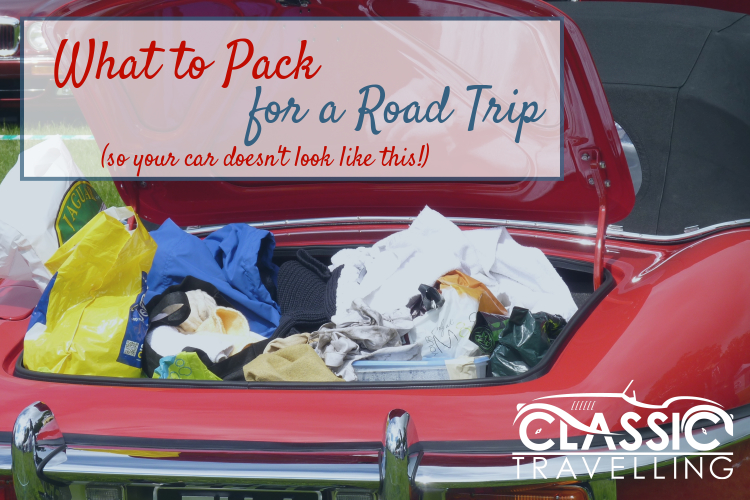
Packing mishaps range from inconvenient (heading off without sunglasses) to disastrous (discovering you left the country without your wallet), but most are preventable. We’ve created these ultimate packing lists to help you pack appropriately every time.
The Ultimate Packing Checklists for You and Your Car
To see the ultimate packing list, scroll down the page or click here for a PDF version (editable) that you can save or print out. To customise the list, simply download or print it, then edit for your specific needs.
Packing Tips for Clothes and Other Items
- When packing for a tour or holiday the most important things to keep in mind are the length of your trip, the weather, and any non-standard clothing or gear you might need.
- Your first step when packing is to which luggage you will be taking and then curate the amount of clothing you’ll need based on that decision.
- If you’re packing more minimally (as many of us need to do with the space allowed in the cars), focus on packing layering clothes in more neutral colours or a limited colour palette. This makes your wardrobe more versatile, so you can wear these items more than once when you’re tight on space.
- Also invest in clothing that does double duty, like multi-use wraps, crushable hats, self-cooling and heating fabrics like merino wool layers, wrinkle-resistant shirts, quick-drying clothing, casual shoes, UPF-proof clothing, and packable jackets.
- When curating your packing list, you should keep in mind the length of your trip and decide on quantities from there.
- Many of the hotels we use for tours have a laundry service or it’s well worth packing a travel laundry kit, even just for underwear.
- Also make sure to bring along accessories like a money belt, scarf or button-poncho (can be used for things like an in-car blanket, coverup at in the sun, or to throw over your dress on a cool evening), and a collapsible tote or day bag for any extra items you might acquire on your travels.
- To help keep things organised, we love using packing cubes and/or compression sacks. They’re especially useful for when you’re travelling to multiple destinations in one trip, as many of our tours do.
How to Pack Toiletries and Medications
Whether it’s important medication or your favourite moisturiser, forgetting any type of toiletry can range from being mildly inconvenient to becoming a serious problem. For toiletries, make sure to pack your essentials, like medication, contact lenses, and any other items that you might not be able to purchase or replace during your travels. However, if you forget items like a toothbrush or razor, you can typically call the front desk at the hotel for a spare.
We also recommend travelling with some type of a travel first-aid kit, which includes items like tweezers, first-aid ointment, bandages, travel-sized hand sanitiser, sunscreen, and insect repellent.
Packing Tips for Everything Else …
- Many of us have multiple tech items now, such as phone, laptop, tablet and camera. So remember to pack electronic adapters and converters.
- Other tech-related items for photographers to pack are a sturdy camera bag, backup batteries, and memory cards, as well as lens cleaner. And don’t forget smartphone essentials like a backup charger, waterproof case if you’re headed out on the water, and a phone stand or tripod for photos.
- A travel packing tip we hope you will not need: Travel with a copy of your passport, credit card, and bank contacts, as well as a list of medications and your emergency contacts.
- If you are travelling abroad, we have an entire checklist for you, but the most important thing to note here is your passport and visas. Make sure that your passport is up to date, has as least six months of validity, and has enough blank pages for any stamps.
Packing List for your Car
To ensure your holiday is as hassle-free and enjoyable as possible, please ensure your car is fit for the trip and in excellent mechanical condition. We therefore recommend a thorough service before departure. Tell your mechanic about the tour, and the time and distances involved, and if in any doubt over any part, replace it or take a spare –Click here for our Tools & Spares List.
We would advise that you also bring with you:
- Some additional oil (most brands are readily available in Europe) but the classic 20/50 oil required by many classic cars is not easily available.
- Your car handbook (for more modern cars) as this may well list European dealers for your marque should the need arise, or have some guides to fixing the problem.
- Your insurance or breakdown cover details – in our experience they have been very good.
Check list (some of this is very obvious):
Download our Tools & Spares List
- Tax & MOT – ensure these are both up to date
- Check your insurance is valid for the countries to be visited
- Change the engine oil and filter if it hasn’t been done recently
- Check the gear and diff oils
- Check anti-freeze/coolant levels.
- Grease all the suspension points and carry a grease gun in the car if you’re planning on doing more than 1000 miles.
- If you have a cambelt then ensure it’s been changed at the recommended intervals. Check the fan belt too.
- Tyres: Check the pressure and top up if necessary. If your tyres have inner tubes carry at least one spare. Inner tubes are very hard to get now, especially abroad. Buy the best available. Also date check your tyres:
- The week and year of manufacture of the tyre are always marked on the sidewall. A tyre marked 2501 was manufactured in week 25 of 2001. Manufacturers usually also mark tyres to show which factory they were made in, so they can trace where and when a faulty tyre was made.
- Find a string of numbers & letters close to the tyre’s bead usually starting with DOT at the end you will find the 3 or 4 numbers relating to the age of your tyres. If your tyres have just 3 numbers they will have been made pre- 2000 and even if they still have plenty of tread on them replace the tyres as they may be subject to rubber corrosion. Signs of ageing can include cracking in the sidewall area due to ozone attack, and discolouring if they come into contact with certain chemicals.
- If your tyres are over 10 years old then replace them, regardless of what their condition looks like. I’ve had 2 blowouts on old tyres that looked in good condition.
- Do remember to take a jack, and know where your jacking points are located.
- Don’t forget a locking wheel nut key if applicable.
- Depending on your wheel type, take a wheel brace for cars secured with nuts, or a hammer and spinner tool for knock-off wheels.
- Basic tool kit: screwdrivers, WD-40, cable ties, adjustable spanner, long-nosed pliers or fuse removal tool, socket spanner, gloves, gaffer tape, Loctite/Superglue. Spares to include: 2x relays (for fuel pump and fan operation); ignition coil, points and condenser (for non-electronic ignition cars); HT leads; distributor cap; spark plugs; jubilee clips; hoses; extra fuses; bulbs. A lot of this should be able to fit in various nooks and crannies around your car.
- Know what compulsory products you need for travelling abroad. This varies from country to country, but usually includes high-visibility jackets/vests (1 per occupant and these must be kept in the cabin of the car, so you can access them without exiting the vehicle); warning triangle; country of origin sticker (there are some much more stylish items than the ubiquitous stickers); spare bulbs. A fire extinguisher and first aid kits are recommended.
- Documents: insurance and registration – these must be originals, but take photocopies to have a spare with you and a copy at home.
- Ensure you have breakdown cover, including repatriation cover if travelling abroad. This is often included with many classic car insurance policies.




